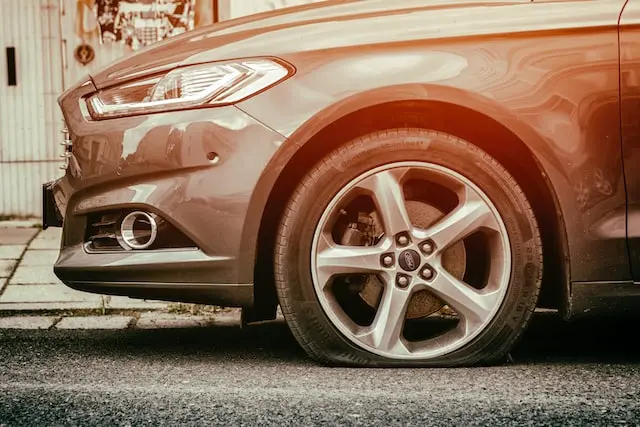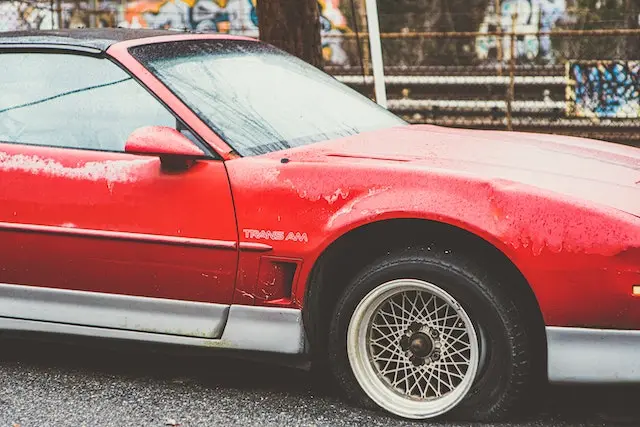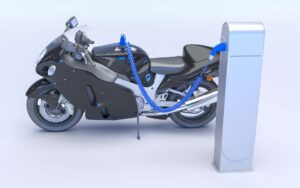Sometimes, flats on your vehicle are unavoidable, and other times you can prevent them. All drivers should understand how important it is to know how often to replace tires. But is there any general rule, and how can you notice they should be changed?
A general rule of thumb is that car tires should be changed once every six to ten years. However, you shouldn’t consider this a strict rule as their expiration date isn’t written in stone but rather varies from case to case. If you notice that your treads have thinned, it means the rubber has degraded from time, temperature, and use. The same can happen to the sidewalls. On the other hand, losing pressure or required traction is also a sign that they should be replaced. Keep in mind that moving to a place with extreme weather will probably require specialized tires for your vehicle.
Why Is the Upkeep of Your Tires Important?
Many factors influence the safety of your drive. While the license plate bulbs ensure you don’t get stopped by the police and fined, functioning U-joints ensure to transmit the power properly. But one of the most essential components to your safety (and the safety of others on the road) is the tires, as it’s them that stop your car when you hit the brakes. Just imagine the nightmarish scenarios where they would stop working! But to fully understand and to be able to notice something is off, you should know all about them.
Where the Rubber Meets the Road
Whether you’ve noticed or not, the contact area or the tread of the tire is no bigger than the palm of your hand. That’s where all things happen – breaking, handling, traction, comfort, and steering (no, the steering doesn’t depend on whether you’ve cleaned the steering wheel or not). That means that the safety and failure of the drive depend solely on this small area, and it could potentially have serious consequences, especially at high speeds. The treads have different designs and vary from one manufacturer to another.
Beads and Their Fillers
Beads and Their Fillers
The beads are on the inside of the rubber, and they serve to hold the tire to the rim or in some cases – the outer edge of the wheel. They can be made from wires of various materials, including brass, copper, or bronze-plated high tensile steel, that is wound into the rubber. They are also filled with a rubber compound that provides stability. The performance characteristics of a tire are determined by the stiffness and the density of the bead filler.
The Inner Liner and the Radial Cord Body
The tire’s strength comes from the cord body, which also transfers cornering pressures from the treads to the wheel. The cord body is made up of body plies, which are rubber-coated fabric cords. Nylon, rayon, or polyester are common materials for body plies, but polyester is the most typical one. The inner liner is a rubber material that is glued to the interior of the cord body and traps air when it is compressed. It works like an inner tube and lacks cord reinforcement. However, new automobile tires no longer contain inner tubes.
Belt Plies and the Sidewall
Located just beneath the tire’s tread, belt plies are comprised of two or more thick cord layers. The tire tread’s strength and stability are primarily achieved by them, and they contribute to increased traction, impact resistance, and tire mileage. The most typical type of rope used in belt plies is steel. The sidewall refers to the portion of a tire that extends from the beads to the tread, and it creates a sheath that safeguards the cord body. The sidewall of the tire has information printed on it, which includes the size, speed rating, and load index. Sidewall rubber materials are made to withstand cuts, ozone, and snags.
How Often to Replace Tires?
Some resources claim that changing your tires should be done once every six to ten years. However, according to the National Highway Traffic Safety Administration (NHTSA), drivers should aim to change them every six years if there is no excess wear and tear present.
Nonetheless, as replacements on a regular basis aren’t a strict rule, you should always pay attention to the actual state of each tire. Wear and tear could be affected by the way you drive, as driving and braking more harshly will damage the rubber faster. Also, if you frequent poorly maintained roads, the treads will endure more damage.
Watch Out for the Tread Depth
I’ve already covered the fact that the treads on each tire help them grip the road and create braking, handling, traction, comfort, and steering. A brand-new tire will have a depth of about 10/32 of an inch, and it will wear down over time, making steering more difficult. The tires are deemed unsafe by the US Department of Transportation if their tread depth is 2/32 of an inch or less. Although your tire still theoretically would have enough tread to allow safe driving, it can be risky to operate the vehicle in some situations or over long distances. Here are the ways to check the tread depth:
- Tread wear markers are raised, equally spaced areas in the slots of the tread, and they are never as high as the tread on brand-new tires. Keep in mind that it’s the right moment to change the tires when you notice the wear level matches the markers.
- With the help of tire tread gauges, you may measure the treads in thirty seconds of an inch. This will display the precise dimensions of the tire tread.
- Depending on where the tread contacts a penny, the penny test allows you to estimate the depth of the tread. You’ll need a penny for this test, so take it, flip it over, and place it straight down in the tread groove of a tire. Look directly at the penny to see where the tread touches President Lincoln’s profile. If his entire head is visible, you need to replace the tire.
Tire Age Isn’t Just a Number
No matter how many miles you have driven, the rubber will degrade over time and come closer to becoming flats. Other factors can influence aging, and they include environmental conditions, maintenance, and storage. Although the recommended age is six years, these other factors can worsen the state and contribute to tire wear and tear significantly.
The Unexpected Tire Damage
Besides the expected wear and tear and the typical aging of tires (sped up by some different factors,) there can also be some unexpected damage. This might happen whether you notice it or not, and that’s why it’s important to regularly check them. This damage often appears because of road conditions and may include speed bumps, rubbing on the curves, and running over potholes. There can also be some dry rot from insufficient use and damage because of high speeds, hard braking, hard turns, or rapid acceleration.

What Are the Other Signs You Need a New Tire?
Besides the typical wear and tear, the age of a tire, and factors that might worsen aging, there are several other things you should consider as important. For instance, if you’ve moved to a colder climate, there is a high probability that you will have to invest in specialized tires. There are some brands and tire models that focus on extreme weather conditions, so they have deeper treads, and they are more flexible when temperatures drop.
Do You Notice a Loss of Traction?
Imagine you’re driving at night, and your steering wheel feels like you’re sliding on wet roads caused by wet weather. Or you feel your car slipping, but it’s dry outside. This is almost a sure sign of low treads which are failing to grip the road surface properly. It may be even worse if it rains outside. Pull by the side of the road and check the treads, and if you notice they are worn out, drive carefully to the closest qualified technician.
Have They Lost Pressure?
If you’re running a quick check and you notice that the tires are not maintaining pressure as they ought to. There can be continuous pressure loss from some kinds of tire damage, such as sidewall damage and debris stuck between the rim and the tire. While in some of these situations, the damage could be fixable, in other circumstances, it might be required to get a set of new tires.

What to Look Out for When You Want to Purchase New Tires
There are a lot of tires on the market, and they are made for different conditions. But no matter whether you choose to buy a set for harsher weather or you need a set for cars for off-road driving (or typical passenger cars, which include some of the best cars for women,) you should pay attention to these things:
- Safety first – Pick tires that will function well even on the worst possible roads or weather conditions. It can make a significant difference.
- Value is important – Making a compromise today can result in spending more money later. Tires that last longer and aid in fuel economy will cost you more now but enable you to save money over time.
- Enjoying the ride is crucial – You can notice that if you try a completely different set of tires, your driving experience will significantly change. So consult with your technician before you make a purchase.
- Owners of sports cars, classics, or luxury cars shouldn’t look for low-budget options – A powerful vehicle needs to translate its power to the road properly, so you’ll need an adequate tire set.
Best Tires for Extreme Weather Conditions
Some people believe that it’s worth investing a bit more in tires manufactured for harsher weather conditions and using them all year round because they tend to last longer. But no matter whether you want an all-around best for your car or you’re on a budget, there are plenty of choices in my list of best tires for extreme weather.
| Brand | Specification | Best for |
| Michelin CrossClimate2 | The load index rating is 103, the tire aspect ratio is 55, and the speed rating is V. | Overall best tires on the market. |
| Firestone WeatherGrip | The load index rating is 95, the tire aspect ratio is 60, and the speed rating is H. | The best for all kinds of terrains. |
| Goodyear Assurance WeatherReady | The load index rating is 94, the tire aspect ratio is 55, and the speed rating is V. | They are the best for touring all season. |
| Toyo Celsius CUV A | The load index rating is 92, the tire aspect ratio is 60, and the speed rating is H. | They are the best for traction. |
| Michelin CrossClimate SUV | The load index rating is 107, the tire aspect ratio is 60, and the speed rating is V. | They are the best for braking on rainy roads. |
| Continental ControlContact Tour A/S Plus | The load index rating is 91, the tire aspect ratio is 65, and the speed rating is H. | The best for comfort. |
| Goodyear Assurance All-Season | The load index rating is 102, the tire aspect ratio is 65, and the speed rating is T. | They are the best for passenger cars. |
| General AltiMax RT43 | The load index rating is 82, the tire aspect ratio is 65, and the speed rating is T. | They are the best for your budget. |
Check Tires Regularly and Have a Safe Drive
As important as it is to know whether the spark plug is bad so you can change it, it’s also important to regularly inspect the condition of your tires. This will help you avoid any mishaps and ensure the safety of your drive. A tire is a critical component of driving performance, and investing in quality sets will ensure you are secure on the road. However, keep in mind that no matter how high-quality the set is, you should also do everything you can to properly maintain it to prolong its good condition.









